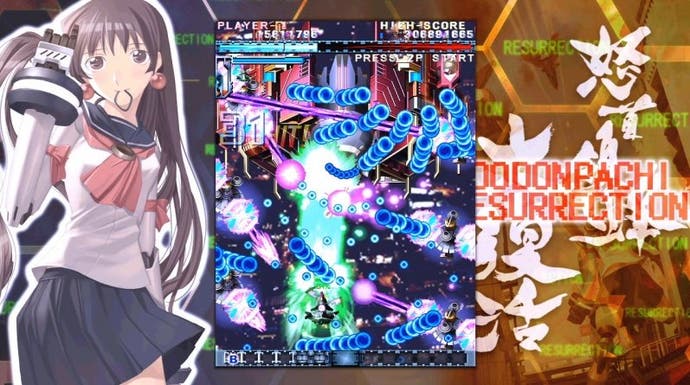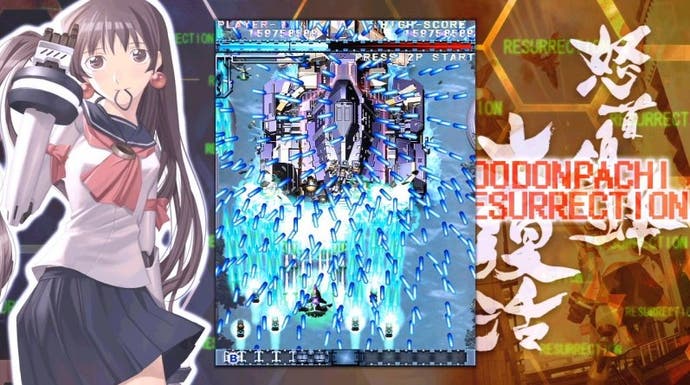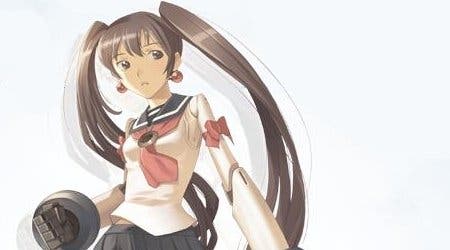DoDonPachi Resurrection: Deluxe Edition Review
Cave story.
In a games industry that is shifting in scope, shape and structure with more speed and significance than ever before, few would have expected a company like Cave to be flourishing. The diminutive Shinjuku-based developer's primary business was founded in the arcades, crafting shoot-'em-ups defined by screen-filling showers of bullets that look, to all but the aficionado, to be entirely unnavigable. The amusement arcade was arguably the first fatality in the industry's evolution. Cave's output is, then, a niche within a shrinking niche and for any business fuelled by the small change in arcade-goers' pockets, that is an alarming proposition.
And yet, by being flexible in embracing Apple's iOS devices, the developer has managed to expand its audience and adapt to the new landscape of games in a way that Japanese studios many times its size are still struggling to. This is not the first time that Western players have met DoDonPachi Resurrection - originally released in the arcades as Do-Don-Pachi Dai-Fukkatsu (which translates rather wonderfully as Angry Leader Bee Great Resurrection). Last year, Cave released a re-crafted version of this, the fifth entry in the company's best-known shmup series, onto Apple's handheld devices, where it received renewed acclaim.
This version of the game, however, is truer to the arcade original, allowing players who don't have the cash, contacts or hardware necessary to buy the original PCB to experience a near-perfect port of one of the most desirable arcade boards around. It's also a dip back into the console middle-ground for the developer - away from the coal face of Tokyo arcades and the remote, newly-formed smartphone plains - allowing home players to experience the game without having to compromise on control or fly halfway around the world to do so.
For newcomers to Cave games, or indeed the bullet curtain/bullet hell avenue of the arcade shoot-'em-up in general, this style of game can seem literally impenetrable at first, thanks to the sheet of bullets that cascades down the screen. In truth, your ship isn't as susceptible to the barrage of death as might first appear, as only the cockpit at the centre of the craft, five pixels by five, is vulnerable to enemy bullets or contact.

The much larger sprite that represents your vehicle is primarily there to allow you to monitor the position of your vulnerable core from the corner of your eye as you focus on perceiving a route through the onslaught. The benefit to this design approach is that it allows the coders and artists to orchestrate screen-filling pyrotechnic displays that make you feel a little like Neo, dodging bullets with prescient coolness - at least, until you misjudge your position or lose your flow for a moment, and the screen judders to a standstill to mark your failure.
The DonPachi series is the latest fruit of the Raiden family tree, taking a military theme and injecting it with a fantastical, science-fiction flair and a futuristic Tokyo setting. The tanks and planes you face are pumped with mechanical steroids: physically impractical monstrosities that cast tall shadows over the trembling earth beneath. Smaller 'grunt' planes disintegrate on touch, your lasers cutting through squadrons like a knife through delicious butter, while the hulking mid-bosses absorb your fire until they finally break apart at the seams.
In contrast to its predecessor, which had you choosing dolls to pilot your spacecraft, this sequel has you fighting these characters as the end-of-level bosses. Each is a giant transforming mecha girl, with her own patterns and shapes, and learning the optimum way in which to take each down can become an obsessive pursuit.
Indeed, while the game can be pumped full of credits as you work to reach the end, the best and most rewarding way to play DoDonPachi Resurrection (and indeed any arcade shmup) is to use just one credit and see how far you can progress. You have two aims in doing so. Firstly, to reach for a one-credit run, in which you make it through the game with just the clutch of lives that your virtual 50 Yen coin bought you. Secondly, to see how high a score you can build in doing so (your score is reset if you commit the implied sin of using a continue).

The scoring in Resurrection is more elegant than in previous DonPachi titles, a conscious change brought about by lead programmer Tsuneki Ikeda. It works in a straightforward manner familiar across many arcade game genres: chaining. The aim is to kill lots of enemies in quick succession. Each time you kill an enemy a timer triggers. Kill another before it runs out and the Combo Gauge fills and another hit is added to your chain. The higher the chain, the more points you earn for each kill, the aim for score attack players then being to create an unbroken chain of kills across each of the game's five core stages.
Shooting down enemies and using certain weapons in certain situations fills the Hyper meter. Each time this is filled the player is granted a Hyper power-up that , when triggered, drastically increases your weapon fire, provides temporary invulnerability and causes your chain combo to increase at a rapid rate. However, triggering Hyper also has the detrimental effect of increasing the speed of enemy fire and increasing the difficulty of the game until you defeat the end-of-stage boss immediately ahead of you.
You have three ships to choose from: A-type (rapid, narrow shot), B-type (moderate speed, mid-range sweeping shot), or C-type (slow, wide shot) and, once you've chosen your craft, three subsequent play-styles to choose between. Strong Style, which is best for beginners, grants you an auto-bomb that detonates automatically when the player's ship is about to be destroyed. Bomb Style, meanwhile, allows skilled players to rub up against enemy vehicles in order to more rapidly increase the Hyper meter. Also, your ship's main weapon is less powerful than in Strong Style, making the game tougher to complete, but making chaining together enemies easier for score-attack players. Finally, Power Style grants you a far more powerful weapon that allows fast building of the Hyper meter, but makes chaining much harder.
This cat's cradle of positives and negatives infuses every decision you make with significance, turning what's ostensibly a simple dodging game into something far more nuanced and supple. And therein lies the key to DoDonPachi Resurrection's appeal. For players willing to develop their palate and get to grips with this deep and flexible experience, the rabbit hole runs deep. Those who simply throw virtual coins at the game to reach the end credits in a single sitting will walk away wondering what all the fuss is about.
Regardless, that Cave continues to flourish in a shifting industry and to evolve a sub-genre they helped define, is testament to the studio's strategic nous - in-game and out. DoDonPachi Resurrection shows just how much poorer we would be without them.









